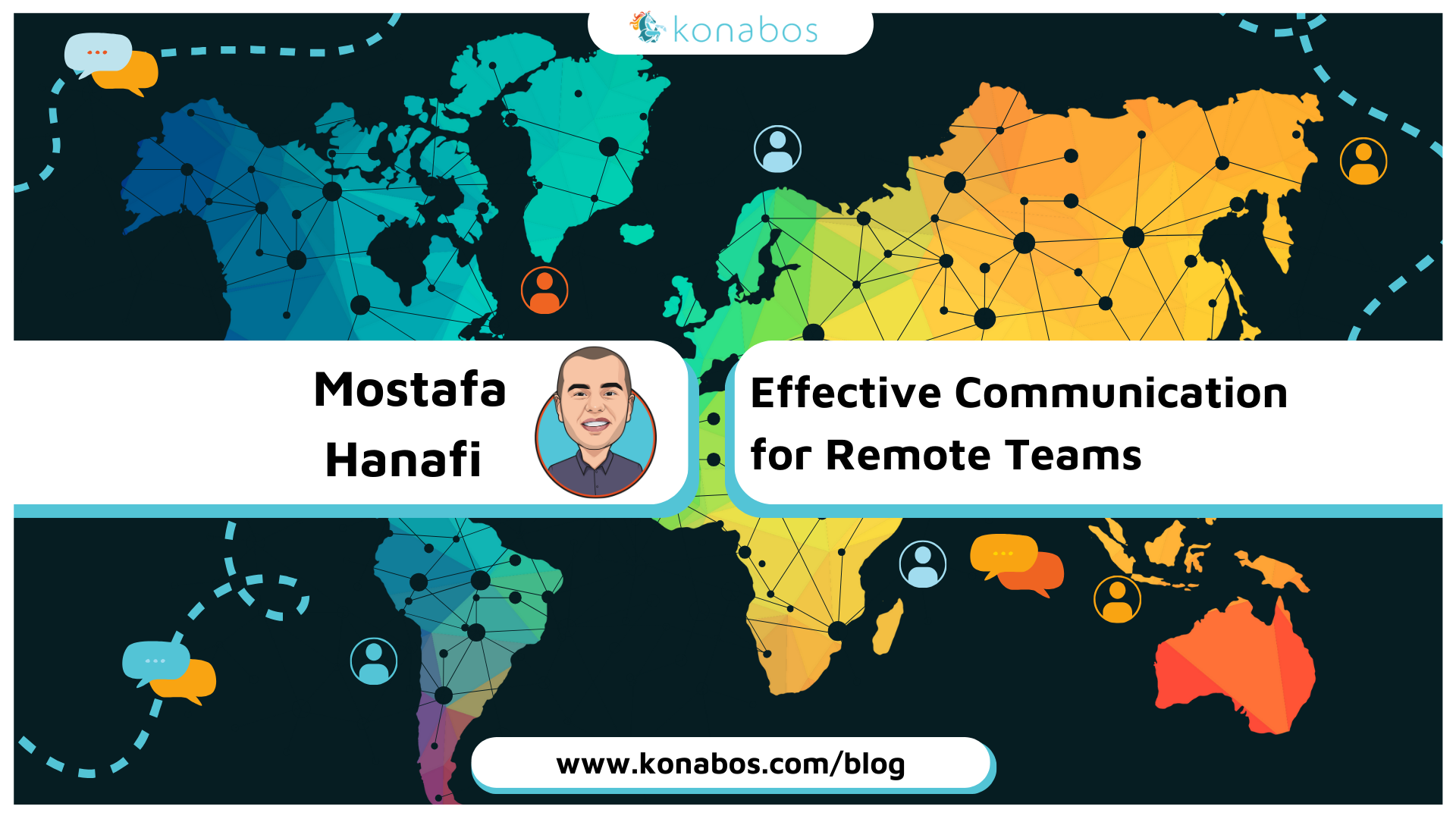Effective Communication for Remote Teams
Mostafa Hanafi - Program Manager
18 Sep 2024
Introduction
In today’s remote-first world, communication is the backbone of our operations. As a fully remote team, our success hinges on our ability to communicate effectively—not just with our clients, but also with each other. When communication is clear and consistent, it fosters a better team culture and ensures that we deliver high-quality services. However, communication is a recurring challenge in many projects, leading to delays, unmet expectations, and internal conflicts. This blog post outlines key strategies for improving communication within teams.
The Importance of Communication
Communication is more than just exchanging information; it is about ensuring that everyone on the team feels understood, supported, and part of the collective mission. In our remote setting, where face-to-face interactions are rare, how we communicate can significantly impact team morale and productivity. When communication is effective, team members enjoy their work more, and projects move forward smoothly. Conversely, poor communication can lead to misunderstandings, missed deadlines, and strained relationships.
1. The Power of Greetings
It might seem trivial, but simple greetings like "Good morning," "Thank you," and "Have a great weekend" can make a big difference. In a remote environment, these small gestures help bridge the gap created by the lack of in-person interaction. They foster a sense of connection and remind us that we are part of a team, even when we are physically apart. Incorporating these greetings into our daily communication, whether at the start of a meeting or in written messages, can strengthen our team bonds.
2. Practicing Empathy
Empathy is crucial in a remote work environment. We all have lives outside of work, and personal challenges can sometimes seep into our professional lives, especially when the boundary between the two is blurred. Understanding and empathizing with our colleagues' situations—whether they are dealing with personal issues or adjusting to a new work culture—can prevent miscommunication and build a more supportive team environment. Empathy aligns with our Konabos values of being fair and kind and is essential for welcoming new team members and helping them integrate into our culture.
3. The Need for Over-Communication
In a remote setup, it's better to over-communicate than to assume that everyone is on the same page. This includes being clear about availability, project expectations, and even the smallest details in our communications. For instance, when creating tickets, it's important to provide comprehensive information to avoid any ambiguity. Over-communication also applies to Slack, our primary communication tool. While it might feel overwhelming at times, consistently sharing updates and clarifying expectations can prevent misunderstandings and ensure that everyone is aligned.
4. Shortening Meetings and Creating Breathing Room
To combat the fatigue of back-to-back meetings, consider shortening meeting times. Instead of scheduling 30-minute or hour-long meetings, aim for 15- or 45-minute sessions. This not only forces us to be more concise and focused but also provides breathing room between meetings. These short breaks can be used for preparation, catching up on messages, or simply taking a moment to recharge. By streamlining our meetings, we can improve productivity and reduce burnout.
5. Prioritization is Key
Clear communication around priorities is essential for effective teamwork. Without understanding which tasks are most urgent, it's easy to focus on the wrong project or overlook critical requests. Regularly discussing and clarifying priorities with your team leads and project managers ensures that everyone is working on the most important tasks. Additionally, blocking time on your calendar for high-priority work can help you stay focused and make steady progress on multiple projects.
6. Continuous Feedback
Effective communication doesn’t just happen—it requires ongoing feedback. We need to be open about what is working and what isn’t, whether it's the timing of meetings, the preferred communication channels, or the volume of messages on Slack. Providing continuous feedback to your team members and leads helps everyone adapt and improve. Don’t wait for formal performance reviews; share your insights regularly to foster a culture of open communication and continuous improvement.
Conclusion
Improving communication is a continuous journey that requires effort from everyone on the team. By focusing on these six key areas—greetings, empathy, over-communication, meeting management, prioritization, and feedback—we can build a stronger, more cohesive team that is better equipped to meet the challenges of remote work. Let's commit to these practices and support each other in our mission to provide exceptional service to our clients and create a positive, collaborative work environment.
Need support for your upcoming web development project? Skip the hiring—partner with us instead!

Mostafa Hanafi
Mostafa is an experienced Project Manager and Scrum Master who has been managing Sitecore projects for more than 8 years. During his 12 years of experience in the field, Mostafa has also excelled as a Business Analyst and Product Manager, where he practices his passion for solving problems. In addition, Mostafa is also a two-time Sitecore MVP. As a Program Manager at Konabos, Mostafa will work with clients to ensure their business goals are achieved in the most efficient and cost-effective way.



Share on social media